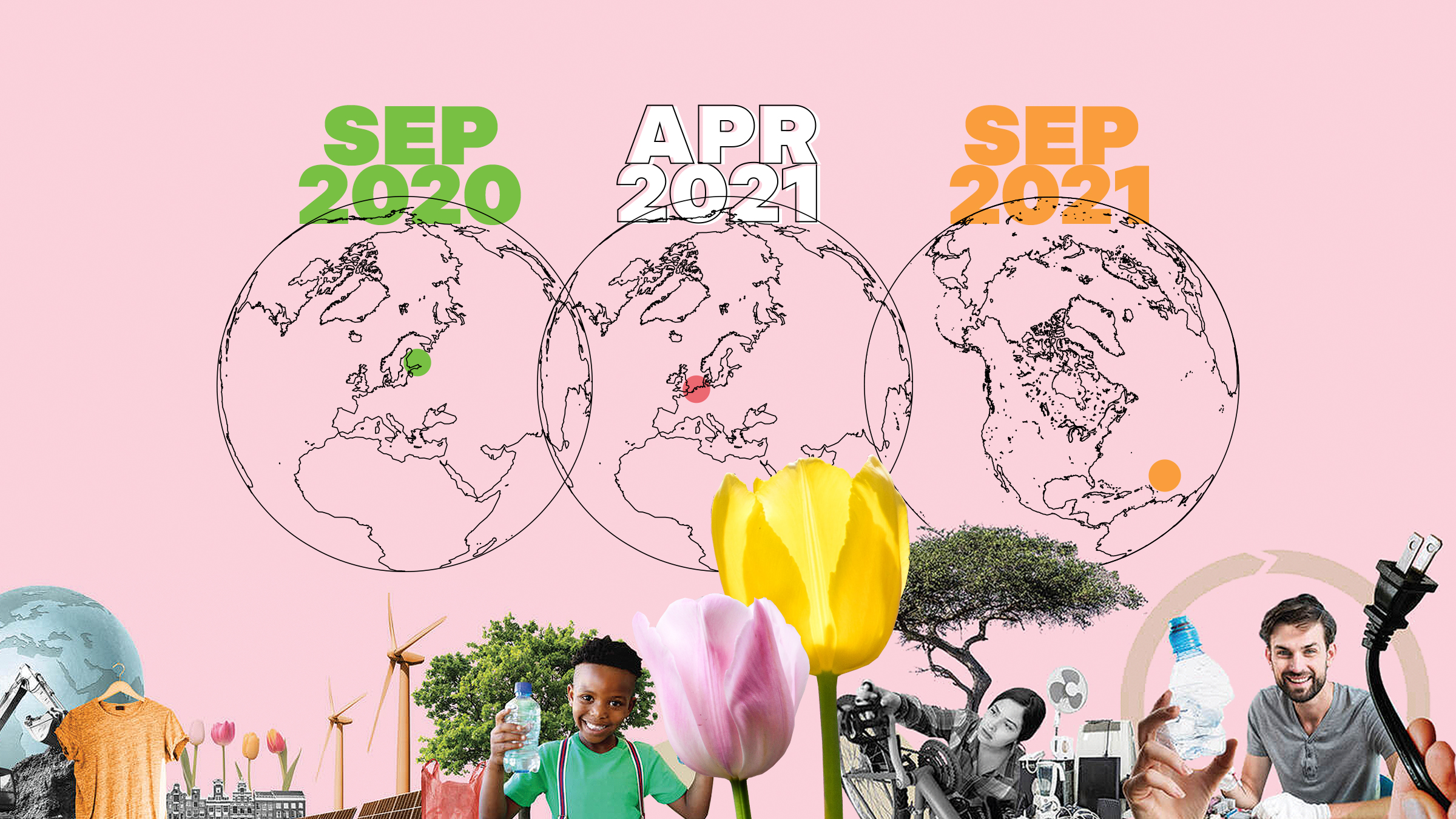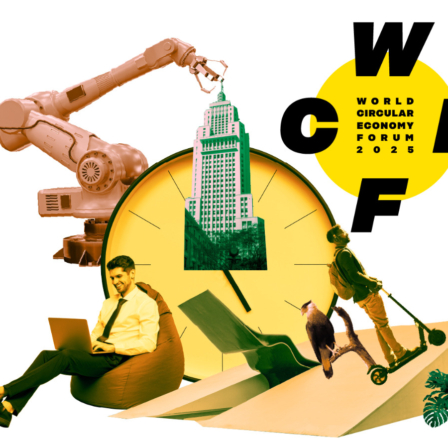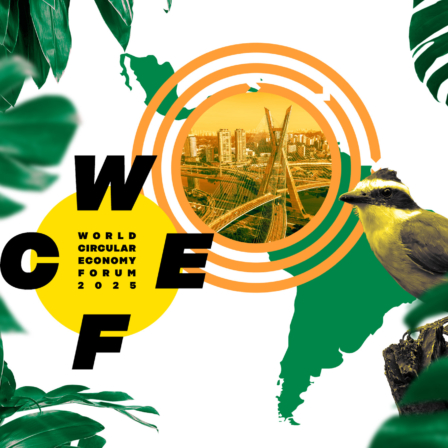Last September, in the midst of the first year of the global COVID-19 pandemic, Sitra joined our global partners at the WCEFonline for two days of inspiration and recollection. Still reeling from the first shocks of the previous spring’s global lockdowns, speakers from all around the world discussed how the circular economy can create opportunities to strengthen societies’ resilience and help reboot the economy with circular solutions.
This rallying cry was heard in the Netherlands, loud and clear. The Dutch set out to demonstrate with us that the circular economy is essential not only for tackling the impacts of the pandemic, but also other crises we face as mankind, in this case, climate change. Enter the WCEF+Climate.
It is crucial to harness the potential of a circular economy to tackle climate change, but we must also pay attention to how it can contribute to solving the pollution and biodiversity crises. Executive Vice President of the European Commission Frans Timmermans perhaps put it best in saying, “There is actually only one concept you need to remember and that is: we need to start living within planetary boundaries.”
The next annual main event, the WCEF2021, to be held 13-15 September, will without question set this in the spotlight. We need to expedite all actions on the road to the next global COP negotiations, both on climate and biodiversity. But first, let’s have a closer look at what happened at the WCEF+Climate.
A tune of urgency for circular climate action
The urgency of tackling the climate crisis rang as a drumbeat through the statements of the esteemed speakers at the WCEF+Climate. The 24h+ conference brought together leaders from the climate and circular communities, and calls to circular climate action from around the globe were heard throughout the conference.
Associate Expert at UNFCCC Kenichi Kitamura pointed out that the current global ambition, which is codified in each country’s nationally determined contributions (NDCs), will lead us not to a 1.5-degree warmer world, but a 3-degree one. It was clear that as we turn our attention to COP26 in Glasgow later this year, the world will need something more to get on track for the emission reductions we need – and that something could be the circular economy.
The potential of circular strategies in producing goods and services has already been established by several reports in recent years, which were frequently referred to during the conference. For instance, Janez Potočnik, co-chair of UNEP International Resource Panel, pointed out that 23 per cent of global GHG emissions are directly linked to production of materials, while the Finance Programme Lead of Ellen MacArthur Foundation Michiel De Smet noted that the circular economy in production processes can complement efforts in the energy transition. A report by Sitra and Material Economics supports these findings, adding that circularity in heavy industries could reduce 3.6 billion tonnes of GHG emissions per year globally by 2050.
Connecting the circular economy to climate action in practice is not an easy feat, however, so why not start at the top? The Cabinet Secretary for the Ministry of Environment and Forestry for Kenya Keriako Tobiko emphasised that NDCs are an “instrument for a coherent approach to meeting SDGs (UN Sustainable Development Goals)” that provides certainty for businesses and investors to build their long-term strategies on. To get the most out of the climate benefits of the circular economy, NDCs could include circular thinking.
Encouraging examples are already out there, such as the 2020 revision of the Chilean NDC, which distinctly included circular economy solutions in its clauses. Yet, the connections have not been mainstreamed and material use gains little attention in national climate plans. Robert Bradley, director of Knowledge and Learning at NDC Partnership, noted that although countries are becoming more ambitious, very few are explicitly using the circular economy concept. Rather, circularity is implied in relation to fragmented sectoral activities such as waste management.
To empower greater ambitions for climate action that ingrains circular principles, finance is vital. Speakers across sessions, for instance Kevin Kariuki, vice president of the African Development Bank or Alette van Leur, director of the Sectoral Policies Department of the International Labour Organization, expressed the need for finance to support development cooperation. Finance is also key to encourage positive action in companies small and large, as noted by Executive Director of Global Sustainable Finance at Morgan Stanley, Courtney Thompson, and Averda’s Chief Executive Officer Malek Sukkar.
Variation on a theme: diversifying the just transition
It is worth noting that in addition to differences in how far along the circular journey nations are, there are also disparities across the world’s regions that influence the foundations for beginning the journey in the first place.
Finland, the Netherlands and the European Union generally have strong technological capabilities, government support to enable policies for low-carbon circular solutions, and a level of well-being that allows for investment in more than just their citizens’ basic needs. On the other hand, the conference showed a very different reality for e-waste pickers in Nigeria or Ghana, for national decision-makers in small island developing states such as Aruba, and for consumers around the world who cannot access sustainable solutions due to high prices.
As the circular economy and the WCEF resonate with ever more people, companies and countries, we are likely to see a wider set of realities that force us to update our understanding of a global circular economy. A just transition to a circular zero-carbon economy is one that allows diverse parties to prioritise actions according to their needs. Beyond that, Roberto Cingolani, minister for Ecological Transition of Italy – the country holding the presidency of the 2021 G20 summit – underscored that we need to actively support countries at different stages on the path to climate neutrality and circularity to ensure no one gets left behind.
There are no direct paths to achieving the social potential that a just circular economy can offer. However, as Aruba’s Minister of Education, Science and Sustainable Development Armando Lampe remarked, “education that is not serving sustainable development is meaningless, because we have to give tools to the future generation to survive and save this unique planet that we have.” Without the circular economy, this toolset will not be complete.
About us, with us – joining into the crescendo
It seems only natural that participants of a global forum underscore the importance of international discussions, but this does not make the point any less potent. Although motivations and starting points for circular transitions differ, people are brought together by the desire to work together. Unprecedented collaboration has already gone into establishing the Paris Agreement throughout the climate COP negotiations, with Glasgow being the next crucial step in developing the international climate agenda.
Executive Secretary of UNFCCC Patricia Espinosa highlighted that ”accelerating the shift to a circular economy is essential to achieve the climate goals agreed by the international community and to help rebuild the world’s economies stronger, greener and better”.
Joint action around circularity should latch itself onto agendas great and small, to keep the drumbeat going, as the conference urged all of us to do. In addition to embedding circularity in climate discussions, conversation also turned to furthering the work among and within networks such as the Global Alliance for Circular Economy and Resource Efficiency (GACERE), the African Circular Economy Alliance (ACEA) and the Latin American and Caribbean Circular Economy Coalition (LACCEC) that share ambitions and practicalities of the circular economy.
As a tangible measure of shared ambition, the Minister of Environment and Climate Change of Finland Krista Mikkonen advocated for research into a potential international agreement on resource use. On a more practical level, leaders such as Costa Rican Minister of Environment and Energy Andrea Meza Murillo and Chief Executive Officer at Royal Philips Frans van Houten stressed the importance of exchanging information and technology to enable local-level innovations. International platforms like the WCEF that bring all of these conversation-starters together are growing in value by the day.
Preparing for the symphony’s next movement – making peace with nature
As a global collaboration initiative, the World Circular Economy Forum does its part in exploring further how the global circular economy community can help address the climate crisis, as well as other global challenges. “We must make peace with nature” stated the Executive Director of the United Nations Environment Programme Inger Andersen. The biodiversity crisis is, as Sitra’s President Jyrki Katainen put it, “the other side of the same coin” of the climate crisis, as their root causes and solutions are inseparable. In this light, the circular economy should be seen as an opportunity to unify these different environmental agendas, ensuring that their synergies and tradeoffs are understood and addressed in circular solutions.
For instance, the issue of decoupling economic growth from GHG emissions and resource use simultaneously can be seen as contradictory, since increasing renewable energy sources require material investments into infrastructure and technology. Nevertheless, as Sitra’s recent study states, decoupling economic growth from energy production is crucial because it provides part of the solution for achieving the 1.5-degree target without compromising economic development. A circular approach to designing and using renewables, however, can reduce the need for more materials in the long-term, offering shared benefits overall. More than that, our work has also shown that circular thinking, starting with re-evaluating the need to consume materials or own products in the first place, can usher in a lifestyle shift that reduces our burden on the environment by simply producing less and living better.
The circular economy can truly solve sustainability challenges in a practical way that also creates attractive opportunities for businesses. While recognising the innovative power of the circular economy, it is also important to emphasise that it should be incorporated in existing frameworks such as the SDGs or metrics for evaluating sustainability action, such as Science-Based Targets. This was echoed by Amina J. Mohammed, deputy secretary-general of the United Nations, who stated that as countries are introduced to the circular economy concept, they should see its value as complementary to existing sustainability tools, not as a detached add-on.
Continuing the ambitious goal of raising the bar for a just, zero-carbon circular economy that strengthens biodiversity, the WCEF2021 will expand the Forum to a whole new continent, garnering new insights for the global circular economy community. Jonathan Wilkinson, Canada’s minister of Environment and Climate Change, asserts that “Canada will be honoured to host the World Circular Economy Forum 2021 in September, together with Sitra and partners – the first time this Forum will be hosted in North America. The transition to a circular economy is overdue and hosting the WCEF2021 will help us advance international dialogue to accelerate this process to address climate change. It’s critically important to get all the key actors onboard – governments, institutions, business leaders, indigenous groups and civil society – as we share best practices, create partnerships and foster innovation.”
As the circular economy community grows and mingles with other sustainability movements and explores regional priorities, the drumbeat heard at the WCEF+Climate will grow and diversify with it. To include all the unique voices of this global community, we are not only going to need more drumsticks, but trumpets, harps, flutes and cellos to start building this symphony together.

















Recommended
Have some more.